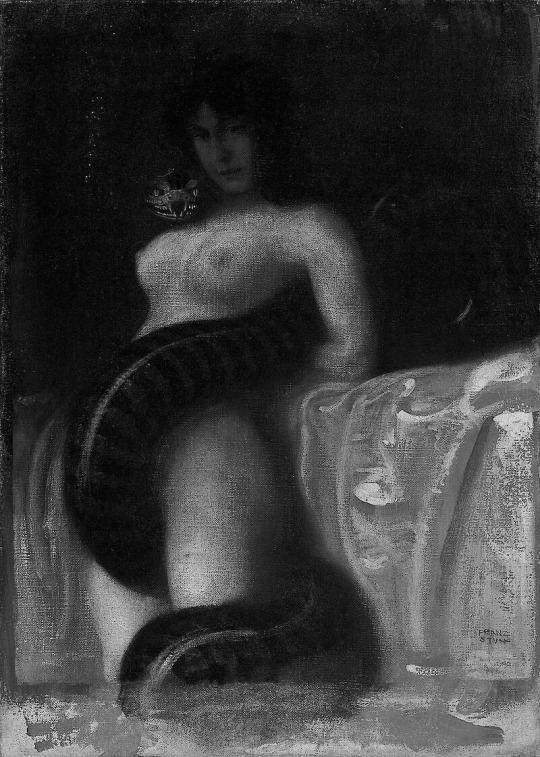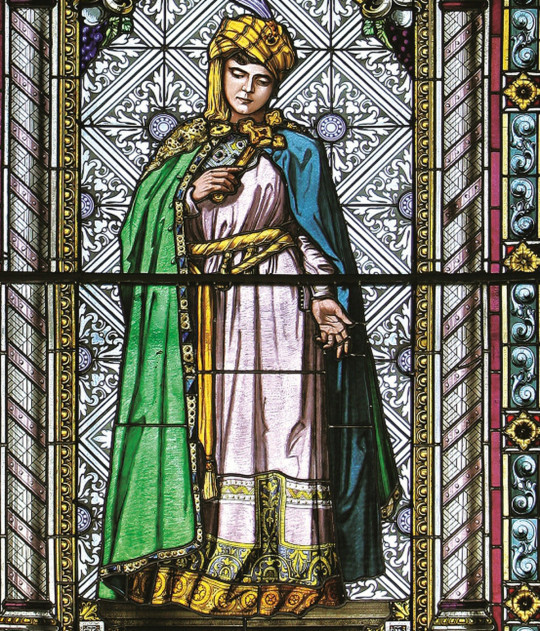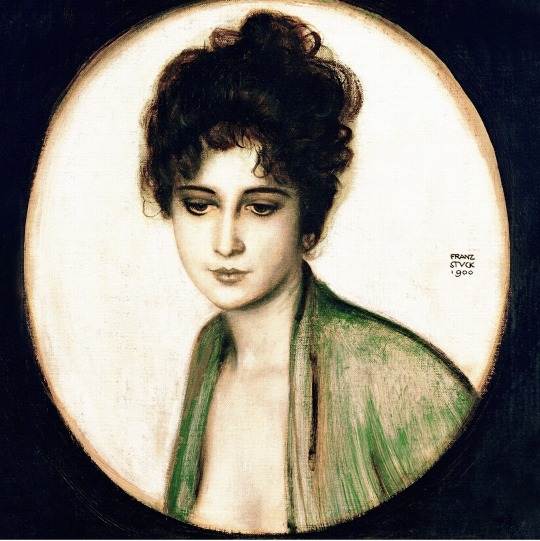#SultanBayezid
Explore tagged Tumblr posts
Text
THE SINS OF DESPINA HATUN

Since the 14th century, one woman has haunted the history of the Ottoman Empire and the very minds of their historians with her influence over a Sultan who suffered a hummiliating fate.
The only wife of a Sultan who has been the target of curses; Despina Hatun.
The reason for this great hatred of her has to do with the fact that she was influential and remain christian throughout her marriage. She was able to maitain the first and main place in the harem of her husband and to make him like her. A likeness that overtime grew into love and devotion.
Her wishes did not remain mere wishes, and for this reason the muslim associates of Sultan Yildirim Bayezid Han, as well as later Turksih historians resented her. Today most people remember her as “Bayezid’s great love”.
To Ottoman sources she was a fatal woman who lured their Sultan into sin. It can be concluded from that amount of hatred that she was allowed privileges and more power than was allowed for a foreign wife of a Sultan, or an imperial wife in general.

SHE MADE THE SULTAN FALL FOR HER
"As for Yıldırım, let's say that he fell in love with the princess." - Necdet Sakaoğlu. Bu Mülkün Kadın Sultanları, pg 83
"Throughout his life he was devoted to Despina, and his brother-in-law Stephen in turn was a devoted and steadfast friend." - Herbert Gibbons. The Foundation of the Ottoman Empire
According to Chalkokondyles, when Bayazit's favorite wife, Lazareva [daughter], whom he took everywhere with him into battle, was captured and handed over to Tamerlane, he ordered that wine be served to him there, in front of her husband. The enraged Bayazit told Tamerlane that what he was doing was not worthy of his father and mother. - Две српске султаније : Оливера Лазаревић (1373-1444), Мара Бранковић (1418-1487), pg 107
"When the latter's wife, the daughter of Lazar, whom he loved more than any of the others, had been taken away, and Timur was taking her around in the camp with him, he made her pour his wine in front of Bayezid, her husband." - Laonikos Chalkokondyles
"He kept her close – she accompanied him everywhere - he appeared unable to part from her. She was the one person, who influenced him most and was of course blamed by the Ottoman chroniclers for the fall of Beyazid’s empire into the hands of Timur. They considered the young sultan totally captivated by her."- Anna Buxton. The European Sultanas of the Ottoman Empire
It is widely understood that throughout their marriage Despina and Bayezid shared a devoted sentiment-perhaps more on his part-despite the circumstances that brought them together. The couple had similar interests such as politics, wine, partying, European customs, conversations and according to historians found constant erotic pleasure with each other. Though all of these cited interests might just be Ottoman historians attempts to depict this woman as deceitful.
" The sexually robust woman – she satisfies all his desires- but remains a Christian." - Richard Franz Kreutel performs a service to Ottoman polemic.
It is said that for some days, Bayezid remained in Despina's chamber and completely forgot about state affairs.
Olivera (Despina Hatun) is accused by Ottoman historians of using her charms and beauty to lure Bayezid to her. This seems highly untrue as Bayezid's harem is labeled as being filled with "forbidden beauties." He could have set his sight on another with more charm and beauty, and in fact he did, but still remained devoted to Despina.
It seems they use her beauty and political influence only as a means to label her as a Femme Fatale who is cunning, power-hungry and worst even, an infidel. Yet, when we look at foreign sources about the personality of Despina Hatun, she is describe as being gentle and flowery.

SHE WAS ALLOWED POLITICAL INFLUENCE
According to Dr. Zeljko Fajfric in his work "Srpske kraljice i princeze," released in 2007, no sultana before Olivera, who did not convert to Islam, managed to become so influential.
Yet something that is enough to critize him on is that he only puts this influence of hers to be due to her charms and beauty, yet again unintentionally labeling her as a femme fatale.
If beauty was all it took to have political influence, dozens more like her would have succeeded in that aspect, but she remains the only wife of Bayezid who had significant importance on politics.
Either Bayezid often sought after her opinion in matters of state or he took her as an advisor which might be the reason she was often with him, but no, a good scent, a soft spoken voice, long hair or enchanting glances will work, at least not for very long, even for a man prone to pleasure like Bayezi, and as we know Despina's political influence grew more with time than it decline.
A few things that are attributed to her council...
I: She helped accelerate the transfer of Prince Lazar's body back to Serbia.
II: She freed and paid ransoms for enslaved christians with the help of her brother; Stefan.

SHE BROUGHT DEBAUCHERY TO THE OTTOMAN COURT
Despina is often blamed for having introduced wine at the Ottoman court.
This sin that Bayezid's partook in can not be credited to Despina because he was already throwing such feasting assemblies ever since his princehood. Him and Despina married in 1390, he was well too familiar with wine and pleasure prior to their marriage.
Despina, later on, might have organized such festivities for him.
" Wine and kebab assembly was established. The infidel's daughter came and toasted Ali Pasha. The lady said, see the moment." - Aşıkpaşazade.
Still it is highly unlikely that Despina, who comes from a culture where married women do not speak in the presence of men would even partake in such assemblies filled with drunk men.
What is more likely is that she organized her own wine assemblies in the harem, with the presence of other women, but the chances of her doing such a thing as drinking in the presence of men is highly unlikely.
She might have even brought wine and so called debauchery to the once "pious" court of the harem, but as for the men; who take up the majority parties in politics and war, they were already familiar with the beverage.
#Bayezid#Sultan#Yildirim#Bayezid The Thunderbolt#SultanBayezid#Sultan Bayezid#Olivera Despina Hatun#Despina Hatun#DespinaHatun#Mileva Olivera Lazarević#medieval#middle ages#ottoman empire#Ottoman#Maria Hatun#lazarevicdynasty#Lazarevic Dynasty#Ottoman Dynasty#Maria Olivera Lazarevic#Domina Despina#yildirim bayezid#Ottoman Poetry#Ibn Kemal#15th century#16th century#Lazarevic dynasty#Serbia#Turkey#Osmanli#despinahatun
305 notes
·
View notes
Text



Concubines named "Gülbahar"
#youtube#ottoman empire#hatun#history#fyp#mahidevran#mahidevran hatun#gülbahar#fatihsultanmehmed#sultan süleyman#yavuz sultan selim#sultanbayezid
4 notes
·
View notes
Photo

#sakalfelsefesi #thomassgowing #özlemkoşar #okuduğumkitap #altıçizilicümleler #sakal #kadın #erkek #kitap #edebiyat #chiviyazılarıyayınevi #tarih #sultanbayezid #yavuzsultanselim #sultanvahideddin https://www.instagram.com/p/B_9ku9ggkdG/?igshid=e1na3stqz0g4
#sakalfelsefesi#thomassgowing#özlemkoşar#okuduğumkitap#altıçizilicümleler#sakal#kadın#erkek#kitap#edebiyat#chiviyazılarıyayınevi#tarih#sultanbayezid#yavuzsultanselim#sultanvahideddin
0 notes
Text
Sultan II. Bayezid Külliyesi Sağlık Müzesi
Sultan II. Bayezid Külliyesi Sağlık Müzesi
Bugün 1480’li yıllara bir yolculuk yapalım… Her alanda günümüz teknolojisinden uzak olan, insanların hastalıklarına çareyi doğal yöntemlerle bulduğu yıllara… O dönemler Fatih Sultan Mehmed’in oğlu ve 8. Osmanlı padişahı olan Sultan II. Beyazıt bir külliye yaptırıyor. Bu külliye, darüşşifa ve tıp medresesi olarak kullanılıyor.
Hastane mimarisi dünya çapında ilk örneklerden kabul ediliyor ve Batı…
View On WordPress
0 notes
Photo

Millî Mücadelenin ilk va’azı; 13 Haziran 1335/1919 Cuma namazı öncesi Sultanbayezid Camii’nde kürsüye çıkan Emekli Müftü ve Vaiz Abdurrahman Kamil Efendi, aralarında 9. Ordu Müfettişi Mirliva Mustafa Kemal Paşa'nın da yer aldığı cemaate şöyle seslenmişti; “Yegâne çare-i hâlâs, (Tek kurtuluş çaresi) halkımızın doğrudan doğruya hâkimiyetini eline alması ve irâdesini kullanmasıdır.” Hüseyin Menc https://www.instagram.com/p/CBdsFf-phHq/?igshid=366bxwy16twu
0 notes
Text
BEST OF BOTH WORLDS

Depiction of Despina Hatun on one of the stained glass windows in placed on the north facade of St. George Cathedral in Novi Sad.
Created in 1902 by Hungarian artist Imre Zseller ( 1878-1959).
The stained glass depicts Despina Hatun holding a cross; showing her devotion to her faith. Something interesting and catching about her attire is that adding to her simple Serbian clothing she also has a golden turban adorned on her head; depicting her liaison to both the Lazarevic and Osman Dynasty.
( Source: Osmanlı Sarayı’nda Bir Sırp Prenses: Mileva Olivera Lazarevic by Mustafa Çağhan Keskin )
#Bayezid#sehzade bayezid#Sultan#Yildirim#Bayezid The Thunderbolt#SultanBayezid#Sultan Bayezid#Olivera Despina Hatun#OliveraDespinaHatun#mariaoliveralazarevic#maria olivares#Despina Hatun#DespinaHatun#Mileva Olivera Lazarević#medieval#middle ages#ottoman empire#Ottoman#Maria Hatun#Mariahatun#Oliverahatun#cathedral aesthetic#Cathedral#stained glass#stained art#turban#lazarevicdynasty#Lazarevic Dynasty#Ottoman Dynasty#vintage
7 notes
·
View notes
Text
A DIVINE BEAUTY IN EDIRNE

"Laz Bey had a fortunate daughter whose beauty was like that of an immaculate houri of paradise, flawless and noble, free in her beauty like a tall cypress tree, distinguished among beauties as a fairy born." - Kemalpaşazâde.
With this poem of his time, Kemalpaşazâde draws attention and describe the beauty of Despina Hatun as divine-like grace to the world.
" Distinguished among beauties as fairy born." In this last part of the poem elevate the physical attributes of Despina Hatun as being unattainable even to those who are considered beautiful.
#Bayezid#Sultan#Yildirim#Bayezid The Thunderbolt#SultanBayezid#Sultan Bayezid#Olivera Despina Hatun#mariaoliveralazarevic#Despina Hatun#DespinaHatun#Mileva Olivera Lazarević#medieval#middle ages#ottoman empire#Ottoman#Maria Hatun#stained glass#lazarevicdynasty#Lazarevic Dynasty#Ottoman Dynasty#Maria Olivera Lazarevic#Domina Despina#yildirim bayezid#poetry#Ottoman Poetry#Ibn Kemal#Şemseddin Ahmed#Kemalpaşazâde#15th century#16th century
6 notes
·
View notes
Text
THE LIFE OF NEFISE HATUN
The one who is considered the first imperial princess to intervene in politics; Nefise Melek Hatun. She, who was given various honorific titles such as Sultan Hatun, and Mirhiali Hatun.

She was born as the daughter of Murad I, and sister of Bayezid I around 1355 and 1360 in Bursa. Not much is known about her early life, we do not have proven information about the identity of her mother.
The first time Nefise Hatun is noticed is during her political betrothal to Alaeddin Bey.
The wedding, which took place around 1377-1381 consisted of a large bride price of; 100 thousand coins, 100 horses, 10 balls of silk, Turkish velvet, gold jewelry, corals, diamonds, red rubies, turquoises, ten thousand camels and many more. - ( Necdet Sakaoğlu, Bu Mülkün Kadın Sultanları, pg 69)
Together the couple had three sons, though only two survived past infancy; Mehmed and Bengi Ali.
Even though the goal of this political marriage was to bring peace between the Ottomans and Karamans, it barely worked out. She first acted as a mediator between her father and husband in 1386. Upon learning that Alaeddin Bey was massacring Ottoman lands, Murad I went to Anatolia seeking his son-in-law, refusing to acknowledge Alaeddin's ambassadors he continued his march to Konya.
Alaeddin was hiding in the Konya fortress that was being besieged. Knowing he would not win he sent his wife; Nefise to seek peace from her father; Murad.
Nesri; who chose to narrate these events says as followed;
He ( Alaeddin) sent a message to her ( Nefise ) and said: - If you do not ask for me from your father, he will take Konya and destroy me. You should be kind to me and kiss the sultan's hand and beg for me. He said to forgive my sin. Sultan Hatun even came and fell at the feet of her father and begged."
The narration ends with Murad forgiving Aleaddin and the Karamans out of piety for his daughter; who obtained peace through loud cries.
The second time she acted as a mediator between her husband and the Ottomans was through her brother; Bayezid I. When Bayezid besieged Konya in 1390, Nefise once again acted in the defense of her husband and was able to obtain forgiveness for him and the people of Konya.
This unfortunately did not work a second time, for soon after the two battled in 1397, Alaeddin was captured and beheaded. Though it seems the command was not given by Bayezid himself, he felt enough piety to behead whoever it was who beheaded his brother-in-law but in the end, he saw this as an advantage to make the Karamans surrender to him by parading his brother-in-law's head around with a spear. ( Christian Slaves of the Ottoman Empire/ An analysis of the fifteenth-century - pg 67 )
Soon after, Nefise and her sons were sent to Bursa by Bayezid's command, but seemed to have been separated, as it is noted the Sultan assigned one of his lord to raise his nephews. ( Christian Slaves of the Ottoman Empire/ An analysis of the fifteenth-century - pg 67 )
Not much is known about her captivity in the Bursa palace. It is possible she was possible she was given charge of the residence containing retired concubines, but then again she is described as a captive so there is no way to be certain.
After the plunder of Bursa in 1402 by the command of Timur, Nefise and her sons were taken to Kutahya to stay with some family members, and later on made their way back to the Kamaranid Principality where it believed she passed away around the year 1402 and 1403.
#geology#Bayezid#sehzade bayezid#Sultan#Yildirim#Bayezid The Thunderbolt#SultanBayezid#Despina Hatun#medieval#middle ages#ottoman empire#Ottoman#Nefise Hatun#NefiseHatun#Osmanglu#Osmanoğlu family#Karaman#Alaeddin Bey#Sultan Hatun#Melek Hatun#Political Marriage#Imperial Princess#Princess#Hatun#Turkish History#turkiye#nefisehatun
2 notes
·
View notes
Text
Despina Hatun In Fiction I
ZABINA

The earliest work of fiction, other than some verbal legends about the aftermath of the Battle of Ankara is " Tamburlaine the Great " by English dramatist; Christopher Marlowe ( 1564-1593 ).
The play published in 1590, which focuses mainly on Timur and the brutality of conquests, also includes side characters like Bayezid I and Zabina; who are heavily based on the real Sultan Bayezid and Olivera Despina Hatun ( Zabina ).
Zabina, the Empress of Turkey and wife of Bayezid is captured with her husband by Timur and forced to endure humiliation as well as abuse. In the end, Bayezid could not bear it anymore and bashed his head on the golden cage he was forced into with his wife, brutally ending his life.
Heartbroken by the humiliation bestowed on her husband and his tragic death, Zabina then does the same, following her husband's actions, and ending her own life in the end.
This play is clearly a dramatized tale of the actual events that took place during the couple's captivity. However, there are a few things the play got right and wrong, such as the tragic ending of Bayezid. His reason for ending his life was the humiliation Despina Hatun had to endure. ( I believe he knew if he died the abuse towards her would end and she like the other Serbs captured on the Battlefield would be released. )
Though Zabina died, Olivera did not. Timurid sources state that she was released and sent back to her home in Bursa, where it will be assumed she attended her husband's funeral in the company of her stepson; Musa, who was also in captivity with them.
But then again historical fictions care little for accuracy.
Adding on, Franchelle Stewart looks fab in that full attire 🫶👑
#fabric#geology#Bayezid#sehzade bayezid#Sultan#Yildirim#Bayezid The Thunderbolt#SultanBayezid#Sultan Bayezid#Olivera Despina Hatun#OliveraDespinaHatun#mariaoliveralazarevic#maria olivares#fabric design#fabric crafts#Despina Hatun#DespinaHatun#Mileva Olivera Lazarević#medieval#middle ages#ottoman empire#Ottoman#Maria Hatun#Mariahatun#Oliverahatun#lazarevicdynasty#play#theatre#opera#Tamburlaine The Great
3 notes
·
View notes
Text
A Memory Of Bayezid From Olivera

( Though the screenshot is black and white, the original tone of the textile is more golden with preserved green, red, and light blue patterns, combined with Arabic texts in black, despite the age.)
The only close physical memory of Olivera and Bayezid. This textile with Ottoman designs and silk texture is one memory we have of both Olivera and Bayezid.
The relic that was donated in the 1400s is about 2.18 meters ( 7'1 feet or 86 inches ) in length and 1.42 meters ( 4'6 feet or 56 inches ) in width.
The text spells " Sultan Bayezid " in Arabic, aiming to the idea that it was made for him and eventually got into the hands of Olivera and made its way to the Studenica Monastery; one of the eldest monasteries built by one of Olivera's ancestors.
Though there are many legends as to how the silk textile ended up in the Monastery, my personal opinion is that Olivera donated the textile after realizing she was gonna die soon and wanted people to remember not herself but her perished lover. ( I'm delusional )
( Sources: Osmanlı Sarayı’nda Bir Sırp Prenses: Mileva Olivera Lazarevic by Mustafa Çağhan Keskin. )
#textile#fabric#relic#geology#arabic#Bayezid#sehzade bayezid#Sultan#Yildirim#Bayezid The Thunderbolt#SultanBayezid#Sultan Bayezid#Monastery#Olivera Despina Hatun#OliveraDespinaHatun#mariaoliveralazarevic#maria olivares#silk#fabric design#fabric crafts#Despina Hatun#DespinaHatun#Mileva Olivera Lazarević#medieval#middle ages#ottoman empire#Ottoman#Maria Hatun#Mariahatun#Oliverahatun
4 notes
·
View notes